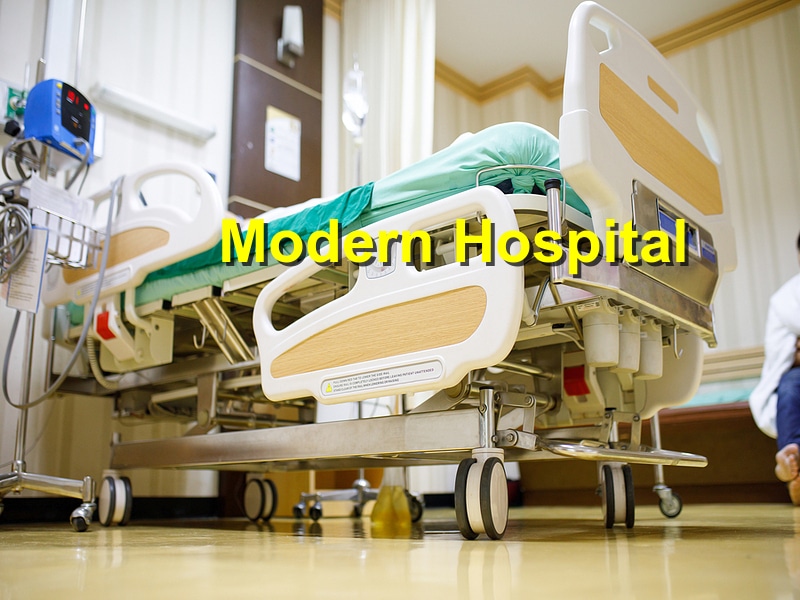The design of modern hospitals is undergoing a significant transformation, with a growing focus on patient-centric approaches that prioritize comfort, well-being, and overall care. Gone are the days of cold, sterile environments; today’s hospitals are being designed with the patient’s experience in mind, incorporating elements that promote healing, reduce stress, and improve outcomes. From natural lighting and soothing aesthetics to technological innovations and flexible spaces, modern hospital design is all about creating a holistic environment where patients and their families feel supported. Let’s explore the key elements of this patient-centered approach in hospital design.
1. Healing Environments: The Role of Nature and Aesthetics
One of the most significant trends in patient-centric hospital design is the emphasis on creating healing environments that reduce stress and promote well-being. Studies have shown that a patient’s surroundings can greatly impact their recovery, and modern hospitals are integrating these findings into their designs.
- Natural Light and Views of Nature: Exposure to natural light has been proven to enhance mood and reduce recovery times. Large windows, skylights, and open spaces with views of nature are becoming standard features in hospital design. These elements create a more inviting, calming environment, which can positively affect patients’ physical and emotional health.
- Soothing Color Schemes and Materials: Instead of the stark, white walls typically associated with hospitals, modern designs are incorporating warmer, more inviting color palettes, natural materials like wood, and soft furnishings. These design choices contribute to a more homelike atmosphere, which can help patients feel more comfortable and less anxious during their hospital stay.
- Outdoor Spaces: Healing gardens and outdoor areas for walking and relaxation are also being incorporated into hospital campuses. These spaces provide patients, visitors, and staff with a chance to step outside, get fresh air, and decompress—further supporting the healing process.
2. Patient Privacy and Comfort
Privacy and comfort are central to patient-centered hospital design. Modern hospitals are focusing on creating private spaces where patients can rest, recover, and interact with their families without interruptions.
- Private Rooms with Family Accommodations: Many new hospitals are moving away from shared rooms and opting for private patient rooms, complete with space for family members to stay. This not only enhances privacy but also allows loved ones to be present, offering emotional support that’s crucial to recovery.
- Noise Reduction Features: Excessive noise in hospitals can be a significant source of stress for patients. Modern hospital design incorporates noise-reducing materials, such as acoustic panels and soundproof doors, to create a quieter, more restful environment.
- Personalization of Space: Some hospitals are now offering patients more control over their environment, allowing them to adjust room lighting, temperature, and even entertainment options. These personal touches help patients feel more at ease and in control of their surroundings, contributing to a positive hospital experience.
3. Technology Integration for Better Care
Technology is playing a key role in the design of patient-centric hospitals, with smart solutions improving both patient care and staff efficiency.
- Telemedicine and Remote Monitoring: The integration of telemedicine capabilities and remote patient monitoring systems allows for continuous care without requiring the patient to be constantly observed in person. This reduces interruptions and allows patients more privacy while still ensuring they receive the necessary medical attention.
- Smart Rooms and Patient Control: In some modern hospitals, “smart” patient rooms are equipped with advanced technology that allows patients to communicate with healthcare providers, control room settings, and access information about their treatment, all from a bedside tablet. This technology empowers patients, giving them greater involvement in their care process.
- Streamlined Operations for Staff: Behind the scenes, hospital design is incorporating technology that streamlines operations for healthcare workers. From real-time tracking of medical equipment to efficient communication systems, these innovations allow staff to focus more on patient care and less on administrative tasks.
4. Flexibility and Adaptability in Design
Hospitals must be designed with flexibility in mind to accommodate the changing needs of patients and advances in medical technology.
- Modular Designs: Modular construction allows hospitals to easily adapt spaces for different needs. For example, a patient room might be quickly converted into an intensive care unit (ICU) if required, without needing significant renovations. This adaptability is particularly important in emergency situations or during health crises, such as the COVID-19 pandemic.
- Multi-Use Spaces: Creating spaces that can serve multiple functions is another trend in patient-centered hospital design. Waiting areas, for instance, may double as education or therapy spaces, ensuring that every square foot of the hospital is utilized efficiently and can adapt to patient needs.
Conclusion
Designing modern hospitals with a patient-centric approach transforms the healthcare experience, focusing on comfort, privacy, and healing. By integrating nature, enhancing privacy, incorporating advanced technology, and building adaptable spaces, today’s hospitals are better equipped to support patient recovery and well-being. As healthcare continues to evolve, these thoughtful design strategies will play a critical role in improving patient outcomes and satisfaction, making hospitals more than just places of treatment—they become environments of healing.
References: StarsandStripes




